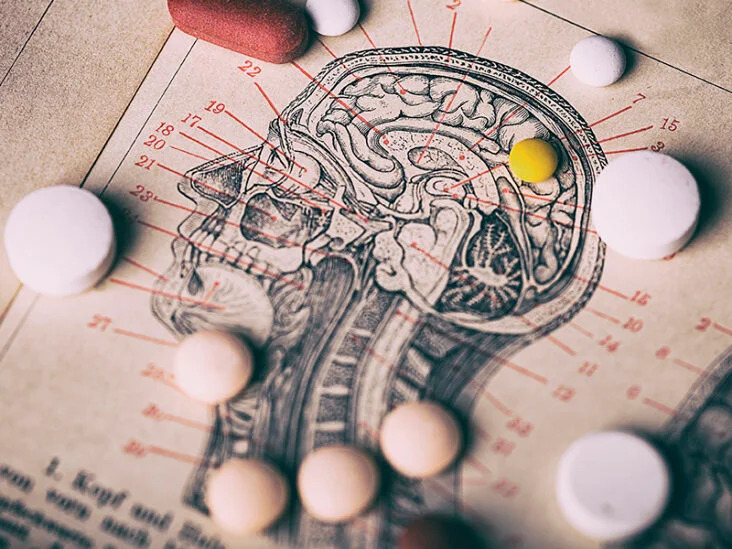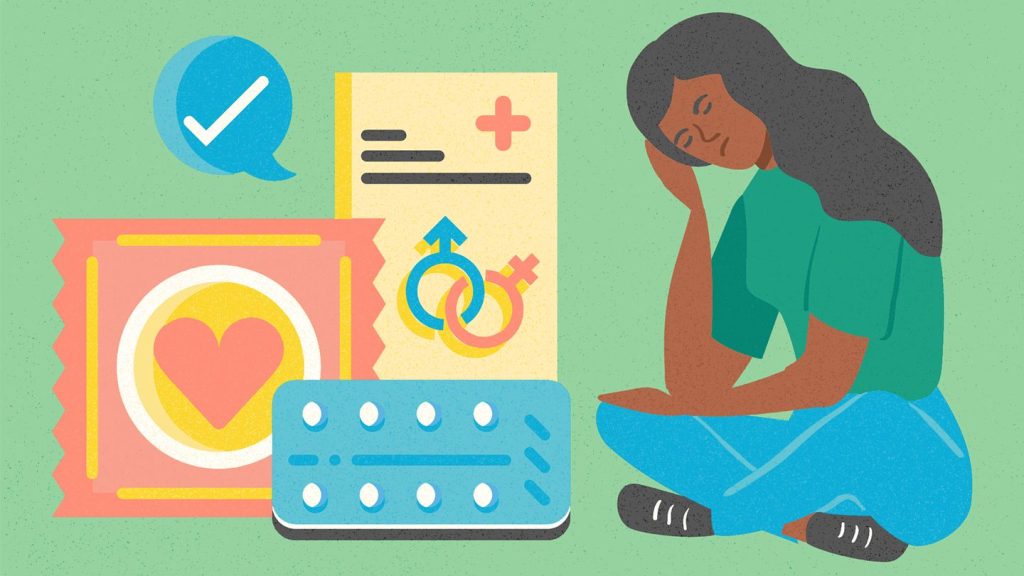Discover the causes of migraines during the menstrual cycle
According to a recent study, migraine attacks in cisgender women who are menstruating may be brought on by an increase in the peptide CGRP, which has been associated with migraines. The study found that this rise correlated with a drop in oestrogen that happens after menstruation.

In spite of the fact that these individuals may still experience migraine attacks, the study did not detect an increase in CGRP in those who used contraceptives or had undergone menopause.
For many years, scientists have understood that the onset of menstruation-related migraine attacks is connected to a decline in the hormone oestrogen. The exact workings of this relationship, nevertheless, are still unknown.
According to a recent study, levels of a peptide linked to migraines rise and fall over the menstrual cycle along with hormonal levels. Levels of calcitonin gene-related peptide, or CGRP, rise in response to the decline in estrogen that happens at the start of menstruation.
The pilot study may provide a critical hint about the origin of menstrual migraine, even if it is uncertain why a decrease in oestrogen can produce a release of CGRP.
Additionally, it might help to explain why menstrual migraine attacks happen during the menstrual cycle and why their frequency decreases after menopause.
Migraines during periods
The symptoms of a menstrual migraine are comparable to those of other migraine types without aura or other sensory abnormalities. They typically start 1 or 2 days after your menstruation starts.
Two types of menstrual migraine are frequently distinguished:
- Menstrual migraine: This more frequent type can have aura symptoms, such vision abnormalities, or not. Other times of the month may see attacks of the migraine.
- Pure menstrual migraines: These only happen before or after your menstruation starts.
Typical menstrual migraine signs include the following:
- one side of the head typically experiences excruciating head ache.
- nausea
- vomiting
- sensitivity to loud noises and light
Menstrual migraine attacks may be accompanied with premenstrual syndrome (PMS) symptoms as bloating, breast tenderness, nausea, and mood swings.
Treatment for menstrual migraines
There are many techniques to stop migraine pain or stop migraine attacks.
Many people believe that menstrual migraine is a distinct illness from other forms of migraine, and not all medications have FDA approval to treat both.
Over-the-counter (OTC) medications
Your physician could advise you to try an over-the-counter (OTC) pain reliever such ibuprofen (Advil, Midol). They could suggest that you take them on a regular basis, before the pain starts.
Your doctor might also advise that you take a diuretic if a physical test reveals that your salt levels are high.
Prescription drugs
To relieve and prevent general migraine headache, a wide variety of prescription medications are available.
Both preventative and abortive drugs are frequently started for migraineurs. A severe migraine attack can be stopped using abortion drugs.
Generally speaking, the following are some instances of treatments for migraine:
- Preventative drugs
- beta-blockers
- anticonvulsants
- Botox (onabotulinumtoxinA)
- antagonists of CGRP
Note that frovatriptan is the only triptan licenced for prevention of menstrual migraine specifically. Find the best medication for your needs by speaking with your doctor.
Abortion-inducing drugs
- blockers of calcium channels
- drug ergotamine
- Serotonin receptor agonist (SRA) and triptans
Some studies suggest that rizatriptan may be the most effective treatment for acute menstrual migraine attacks.
Your doctor might also advise switching to a birth control technique that uses a different hormone dose if you are using hormonal contraception.
Your doctor could advise you to try a treatment, such as a pill, to assist balance your hormone levels if you aren’t using hormonal birth control.
Natural solutions
Some vitamins and supplements have shown promise in preventing migraines that are brought on by hormones.
You should be aware that none of these treatments has been particularly investigated for menstrual migraine:
- riboflavin, or vitamin B2,
- Q10 coenzyme
- magnesium
- feverfew
Due to potential drug interactions, always consult your doctor before beginning any new therapy, including OTC medications or dietary supplements.
Exercise
Exercise Consistent exercise may reduce migraines brought on by hormones. Others might discover that exercising exacerbates their symptoms.
An analysis of papers published in 2019 found that aerobic exercise may shorten migraine attacks. An other study raises the possibility that regular exercise has a preventative impact.
To get the most out of your workouts, stay hydrated, eat a high-protein meal before you go, and warm up your muscles.
lowering tension
Migraine attacks can be triggered by stress, even a brief reduction in tension.
A 2014 study hypothesized that migraine attacks would be more likely to occur when stress levels drop from one day to the next. The “let-down” effect is what is meant by this. It may be beneficial to reduce overall tension and deal with it as soon as you become aware of it.
Although it may seem more difficult than it actually is to reduce stress and anxiety, there are practical steps you can take every day. When you wake up in the morning or right before bed, try doing some yoga or meditation.
Hormone levels affecting migraine
Hormone fluctuations can cause migraine episodes. Some medications, such as birth control pills, can also contribute to them.
Menstruation
The National Headache Foundation estimates that 60 percent of women who suffer from migraines also experience menstrual migraine attacks. This can occur anywhere from two days before and three days following the conclusion of the menstrual cycle.
When a person starts menstruating, migraines may start, although they can start at any moment. Through menopause and the reproductive years, your attacks may continue.
Menopause and the perimenopause
During perimenopause, decreasing levels of estrogen and other hormones, such as progesterone, might result in migraine headaches.
Perimenopause typically begins 4 years before menopause, however, it can start up to 8 or 10 years earlier.
Do you have a headache or a migraine?
Compared to regular headaches, migraine episodes are different. On one side of the head, they typically induce intense degrees of throbbing pain. It is possible to have a migraine “with aura” or “without aura.”
One or more of the following symptoms may be present in the 30 minutes prior to your attack if you have migraine with aura:
- noticing lightening strikes
- observing strange lines or dots
- a passing loss of vision
- The face or hands go numb
- feeling of tingling in the hands or face
- Speech changes
- weakness
- uncharacteristic alterations in flavour, fragrance, or touch
Other signs of migraine with aura include:
- nausea
- vomiting
- sensitivity to sound or light
- ache in the back of one or both ears.
- one or both temples are hurting
Common headaches never start with an aura and usually hurt less than migraines.
There are numerous types of headaches, such as:
- Headaches due to stress. Tension headaches can be brought on by high amounts of stress and worry. They might also be brought on by strained or tense muscles.
- Headaches in clusters. These headaches are frequently confused with migraines. Usually affecting one side of the head, they can also involve other signs and symptoms like runny nose, watery eyes, and nasal congestion.
Migraines and birth control
Both Dr. Raffaelli and Dr. Afridi said that while it looks that using contraceptives may have an impact on migraine attacks, the results are complicated.
According to Dr. Afridi, several methods of contraception respond differently in terms of migraine. Desogestrel may help some people with migraines, according to some research, she continued.
The main component of the “mini-pill,” a progestogen-only contraceptive pill, is desogestrel. For women using oral contraceptives, according to Dr. Raffaelli, “about one-third of patients with migraine experience improvement, one-third experience worsening, and one-third experience no change.”
Oral contraceptives used in a 21-7 cycle, which involves using them for three weeks and then going without for one week, According to Dr. Raffaelli, this most frequently results in migraines getting worse.
REFERENCES:
- https://www.medicalnewstoday.com/articles/migraine-why-do-attacks-often-occur-during-menstruation
- https://www.healthline.com/health/migraine/migraine-during-period
- https://my.clevelandclinic.org/health/diseases/8260-menstrual-migraines-hormone-headaches
For Menstrual cycle medications that have been suggested by doctors worldwide are available here https://mygenericpharmacy.com/index.php?cPath=24
